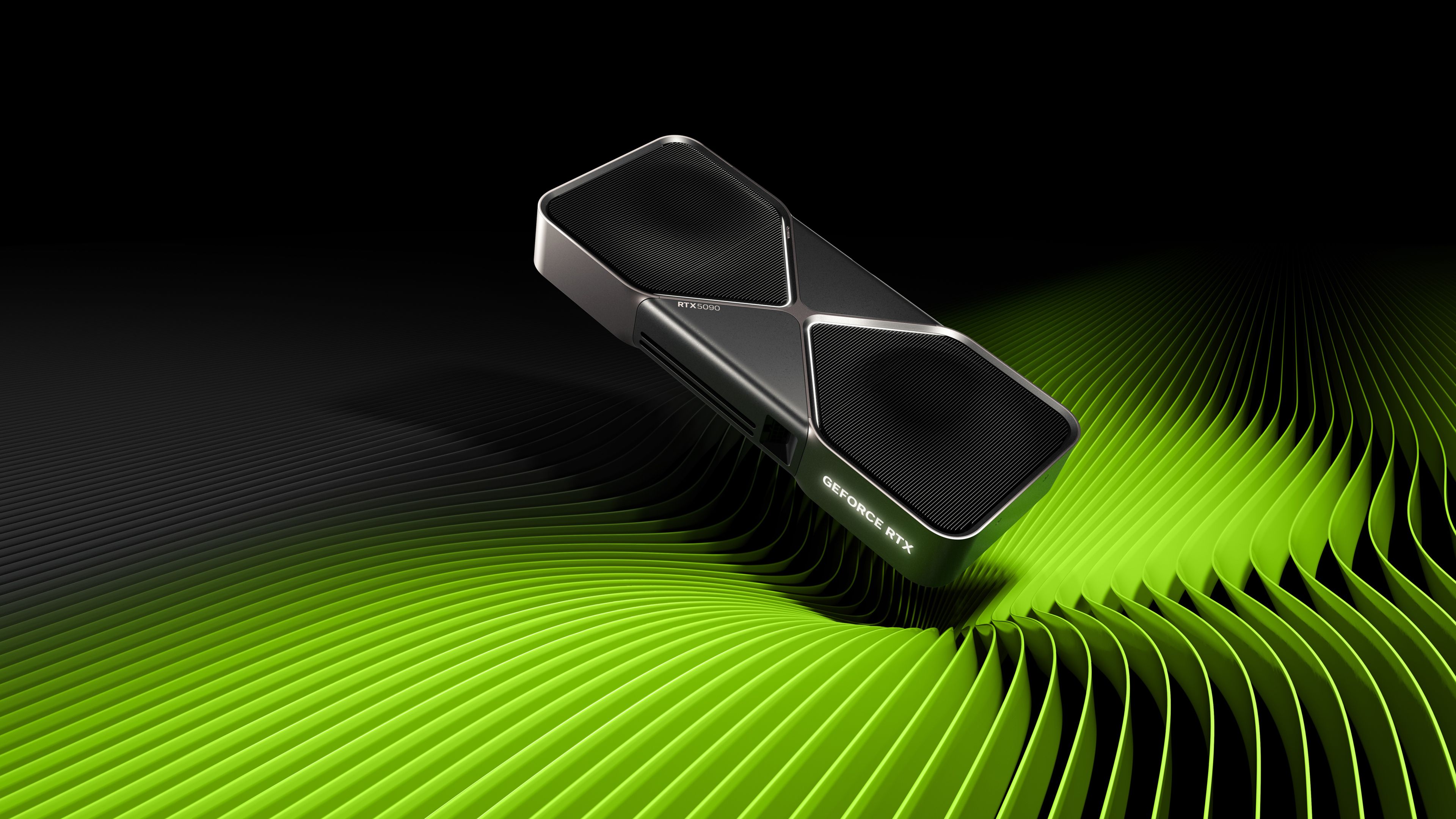The RTX 4000-series was unveiled more than two years ago, and while the lineup is still holding up pretty well, we’re already due to successors. Now, NVIDIA has just unveiled its RTX 5000-series, and it’s one of the company’s biggest generational improvements ever.
NVIDIA has announced its next-generation GeForce RTX 5000-series GPUs, powered by the new Blackwell architecture. There’s a total of four graphics cards for this initial announcement: the RTX 5070, the RTX 5070 Ti, the RTX 5080, and the RTX 5090. Out of these, the RTX 5070 and the RTX 5090 are the ones that will make the most headlines. The RTX 5070, the lowest-end card, is apparently just as powerful as the RTX 4090, at just a fraction of the cost. If this is true, it will likely quickly become a top option for gamers.
The biggest and most powerful card is, as you might expect, the RTX 5090. According to NVIDIA, this one is two times as powerful as its predecessor, which is an insane generational improvement. This card won’t be for everyone—more on that later—but if this claim holds up in real life (as usual, it’s good practice not to take what a company says or claims as gospel and to wait for independent testing) it will be an impressive development.
We’re not getting just raw performance improvements, either. The RTX 5000-series has a few other party tricks down their sleeve. For starters, this generation introduces RTX Neural Shaders, bringing AI networks into programmable shaders to enhance real-time rendering of materials and lighting. RTX Neural Faces, along with technologies for ray-traced hair, skin, and Mega Geometry, aim to significantly improve the realism of game characters and environments. In other words, these cards use neural networks and AI in general to enhance the way they actually render games. We’d need to see how much of a game-changer this is, if it actually is one, but NVIDIA seems pretty confident on what it’s doing here.
NVIDIA also showed off DLSS 4, which is baked into this new generation of graphics cards. DLSS 4 can enable up to an 8x performance boost over traditional rendering methods, thanks to Multi Frame Generation, which uses AI to generate additional frames. For this, DLSS 4 is actually moving on to a transformer model for the first time. In case you don’t know what a transformer model is, it’s what powers generative AI and large language models in general—a transformer model can weigh the importance of different parts of the input data when processing each element. This allows DLSS 4 to generate not only more frames but also higher-quality frames with fewer visual artifacts than before.
DLSS 3 was already generating new frames from scratch using AI, and the fact that we have a transformer model here means that DLSS 4 can do it much more efficiently. This transformer also enhances DLSS’s Super Resolution and Ray Reconstruction features, resulting in sharper images and more realistic lighting. Over 75 games and applications will be supporting DLSS 4 at launch, and more will come down the road.
The RTX 5090 and RTX 5080 will be available on January 30, and the only bad part about them is the price—the cards are priced at $1,999 and $999, respectively, which is actually a bit outrageous. Luckily, the lower-end ones, which are still great, are a bit more sensibly-priced. The RTX 5070 Ti and RTX 5070, which will follow in February, are priced at $749 and $549, respectively. $549 is actually a really good price for a card that performs just as good as the RTX 4090, mind you.
Laptop versions of these GPUs will be available starting in March and April. Founders Editions and models from various manufacturers will be available worldwide—individual manufacturers should be making announcements soon on their own cards, while you’ll be able to buy the Founders Edition cards from NVIDIA’s website.
Source: NVIDIA

